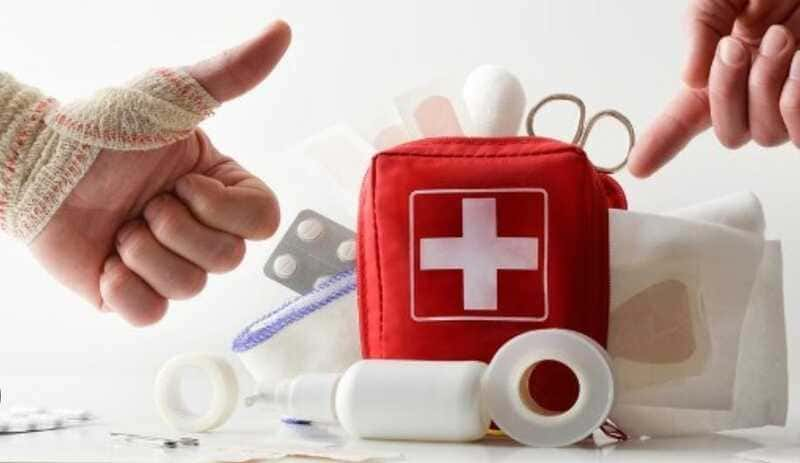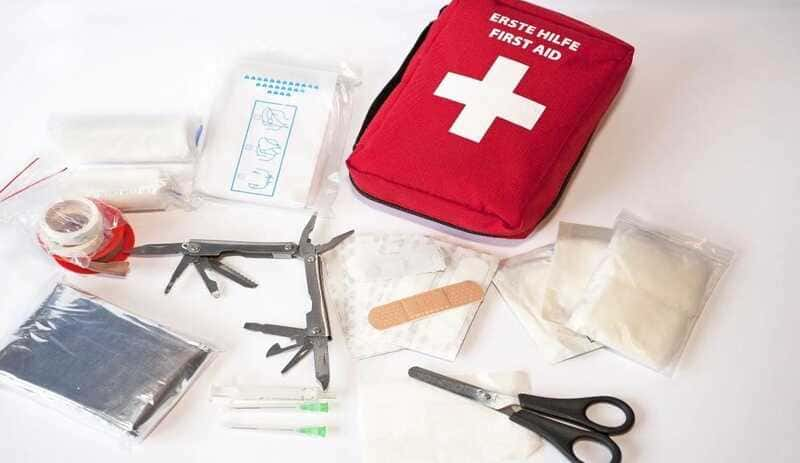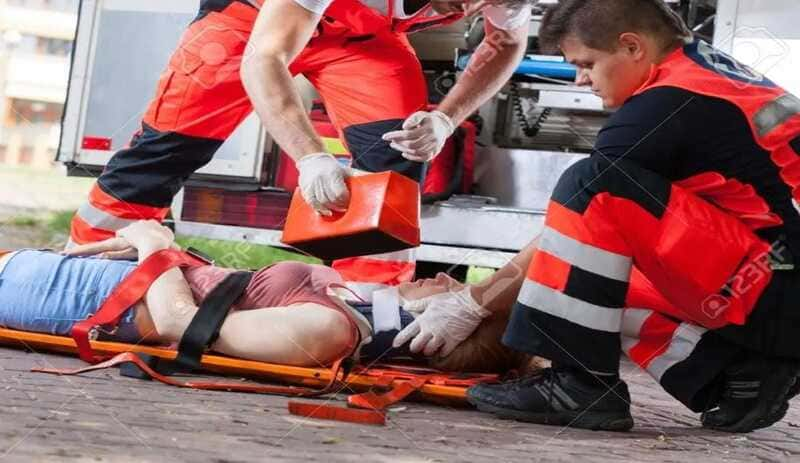In everyday life at home, the safety and well-being of our loved ones are of utmost importance. However, at any moment, an accident or unforeseen event can jeopardize the health of those we love the most. It is in these crucial moments where knowledge and preparation in first aid, backed by a fundamental element, become vital: the first aid kit.
The first aid kit is an essential resource that can make the difference between a quick and effective emergency response and the uncertainty surrounding an unattended accident. From minor cuts and scrapes to burns or sprains, the properly equipped first aid kit becomes a valuable tool capable of providing immediate relief and initial care in critical situations.

Throughout this article, we will explore the importance of the home first aid kit. From its contents to where it should be located. We will discover how its presence can prevent major complications, provide peace of mind to family members and ultimately save lives.
We will also look at common injuries and situations in the home environment, learn how to administer first aid properly and understand why it is essential that all members of the household are familiar with its use.
Introduction to first aid in the home.
In the tranquility of our home, we are always looking to ensure the safety and well-being of our family. However, in the blink of an eye, an accident or emergency can occur, and in those critical moments, having basic knowledge of first aid can make the difference between a quick recovery and a more complicated situation. The importance of having first aid knowledge in the home lies in our ability to provide an immediate and appropriate response to various emergency situations that may arise at any time.
First aid is the set of techniques and procedures that are applied early to a person who has suffered an accident or sudden illness, in order to maintain their vital functions and prevent the deterioration of their health until they receive specialized medical attention. These techniques range from caring for minor wounds and cuts to stabilizing a critically ill person before the arrival of emergency services.

It is essential to have basic knowledge of first aid in the domestic environment, as the home is a place where common accidents can occur, such as cuts, burns, falls or poisoning. Knowing how to act quickly in these situations can mean the difference between a quick and successful recovery or a serious complication.
From the above mentioned derives the importance of the first aid kit at home. This kit should contain basic elements, such as bandages, dressings, gauze, disinfectants, scissors and other supplies that allow us to quickly and effectively treat the most common injuries at home. The first aid kit not only provides us with the necessary tools, but also the confidence to act promptly and safely in emergency situations.
What is a first aid kit?
In order to address the importance of the first aid kit in the home, we must first define what this kit is. The first aid kit is an essential resource that all households should have at their disposal to face emergency situations quickly and efficiently. It is a kit specially designed and equipped with various elements and basic medical supplies to provide initial care and relief in case of accidents or minor injuries.
This first aid kit becomes a vital tool in the home, as it can make the difference between a timely and adequate response to an emergency and the uncertainty surrounding an unexpected event. The importance of the home first aid kit lies in its ability to provide the necessary elements to treat minor injuries and prevent major complications until professional help arrives.
In terms of contents, a first aid kit should be carefully stocked with a variety of basic items. Among the essential items it should contain are:
1- Wound healing material: this includes bandages of different sizes, sterile gauze, adhesive plasters, plasters (Band-Aid’s) and adhesive dressings.
2- Disinfection solutions: It is important to have antiseptic solutions, such as hydrogen peroxide or alcohol, to clean wounds before dressing them.
3- Basic medications: Analgesics, such as paracetamol or ibuprofen, may be useful to relieve pain temporarily until medical attention is received.
4- Immobilization material: Tape or elastic bandages may be necessary to temporarily immobilize a joint or limb affected by a sprain or strain.
5- Scissors and tweezers: Tools for cutting bandages or removing foreign objects from wounds.
6- Disposable gloves: To protect the first aid provider from infection when caring for an injured person.
The organization of the first aid kit is also of utmost importance to ensure its effectiveness. It should be arranged in a clear and accessible manner, so that any member of the family can quickly access the necessary items during an emergency. It is also advisable to keep the first aid kit in a cool, dry place, out of reach of small children, but accessible to adults.

Benefits of having a first aid kit in the home.
The importance of a first aid kit in the home goes beyond being a simple precaution. Having a well-equipped first aid kit at home can mean the difference between a quick and effective response in emergency situations and the uncertainty surrounding an unattended accident. The benefits of having this resource at your fingertips are invaluable and can safeguard your family’s health and well-being in multiple ways.
First, the availability of a first aid kit in the home provides peace of mind and confidence to family members. Knowing that they have the necessary elements to treat minor injuries and alleviate minor symptoms of illnesses allows them to act promptly in emergency situations, without having to wait for external medical services to arrive.
Likewise, the first aid kit is especially valuable for providing immediate attention in critical situations, such as cuts, burns, sprains or bites. The rapid application of first aid can prevent major complications, minimize the risk of infection and reduce recovery time.
Another significant benefit is the ability to handle emergencies while waiting for professional medical services to arrive. In situations where minutes count, such as an allergic reaction or an accident causing blood loss, prompt action with a well-equipped first aid kit can make all the difference in the final outcome.
In addition, a first aid kit in the home promotes prevention and safety. By having items on hand to treat wounds and bruises, family members can feel more confident and motivated to participate in outdoor activities or sports, knowing that they are prepared to deal with potential injuries.
Another aspect to consider is the economy of having a first aid kit at home. On many occasions, early and proper care at home can avoid unnecessary visits to health centers or doctors’ offices, which in turn can save time and resources.
Common injuries and situations in the home.
The home, although a familiar and cozy space, is not exempt from unforeseen situations that can result in injuries or accidents. It is important to be aware of the most common injuries that can occur in this environment in order to be prepared and have a first aid kit that allows us to respond effectively and quickly in these cases.
One of the most common injuries in the home are cuts and scrapes. These can occur while cooking, handling sharp objects or even during everyday activities. The first aid kit, with bandages, dressings and disinfectant solutions, becomes an invaluable ally to clean and protect these wounds and prevent possible infections.
Burns are also common in the kitchen or around electrical appliances. The first aid kit should contain special dressings for burns, such as gels or creams, which relieve pain and promote healing.
Sprains and strains are another eventuality in the home, especially during physical activities or household chores. The first aid kit, with elastic bandages and adhesive tape, can provide the necessary support to immobilize the affected area temporarily until medical attention is received.
In the case of insect bites, the first aid kit may contain oral antihistamines or creams to relieve itching and inflammation.
It is also important to mention the presence of foreign objects in the eyes or on the skin, especially in households with small children. The first aid kit should have tweezers to remove them carefully and safely.
Another common injury in the home is bruises or contusions, which can occur during recreational activities or simply due to carelessness in the home. Applying ice from the first aid kit can help reduce inflammation and relieve pain.
It is important to note that while the first aid kit can be useful in many situations, it is important to know when it is appropriate to apply first aid and when it is necessary to seek professional medical attention. In cases of serious injury, loss of consciousness or any life-threatening situation, it is imperative to call emergency services immediately.
Importance of first aid training.
The importance of first aid training cannot be underestimated, as this skill can make all the difference in home emergency situations. When it comes to the safety and well-being of our loved ones, having basic first aid knowledge becomes an invaluable resource that can save lives.
Taking first aid courses or training is essential for household members to acquire the necessary skills to act effectively in critical moments. These trainings provide a solid understanding of how to recognize and respond appropriately to different emergency situations, from minor injuries to life-threatening emergencies.

First aid training enables household members to be prepared to care for common injuries and household accidents. Knowing how to properly administer bandages, treat burns or cuts, immobilize an injured limb, and provide basic support for sprains or fractures is essential to providing immediate and effective care before professional help arrives.
In addition, first aid training focuses not only on technical skills, but also on the ability to remain calm and act safely and effectively under pressure. Learning to maintain composure and make quick and accurate decisions is crucial for dealing with emergencies without panicking and ensuring an adequate response.
Another important aspect of first aid training is that it enables household members to be aware of when it is necessary to seek professional medical attention. Recognizing the limits of one’s knowledge and knowing when it is appropriate to call emergency services is vital to protecting the lives and health of those around them.
First aid training also fosters a sense of responsibility and solidarity in the family. When all members of the household are trained, it creates a supportive and collaborative environment in which everyone can contribute to providing assistance in emergency situations.
Maintenance and revision of the first aid kit.
The first aid kit in the home is an invaluable tool to provide immediate attention in emergency situations. However, its effectiveness depends to a great extent on its maintenance and constant revision. The need to keep the first aid kit up-to-date and in optimal condition cannot be underestimated, as this ensures that it is ready to act at a moment’s notice and can provide effective assistance when it is needed most.
The first step in ensuring the effectiveness of the first aid kit is to conduct regular reviews of its contents. It is essential to carefully examine each item to ensure that they are not expired or damaged. Expired products may lose their effectiveness and, in some cases, may even be detrimental to their use. Therefore, removing and replacing expired items is critical to ensure the safety of those who need your help.
In addition to checking expiration dates, it is important to verify that items are in good condition and functional. For example, make sure scissors are sharp and bandages are not damaged or worn. Items in poor condition could hinder the assistance process and, in some cases, may worsen the situation.
Another important aspect of first aid kit maintenance is to make sure it is well organized and easily accessible. Make sure everything is clearly and neatly arranged so that, in emergency situations, you can quickly find what you need.
Also, considering the specific needs of household members when updating the first aid kit can be beneficial. For example, if someone in the household has allergies or particular medical conditions, additional medications or specific items in the kit may be required to address related situations.
Maintaining and constantly reviewing the first aid kit not only ensures its effectiveness, but also sends a message of responsibility and care to other members of the household. By keeping the first aid kit updated and prepared for any eventuality, a real commitment to the safety and well-being of the family is demonstrated.

